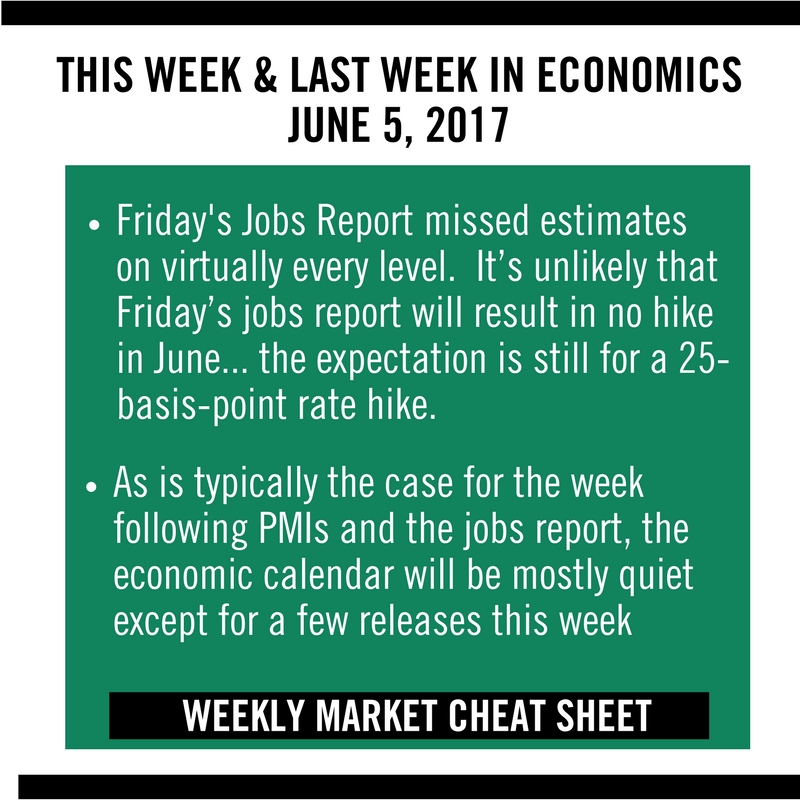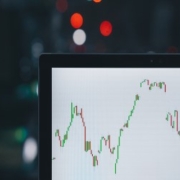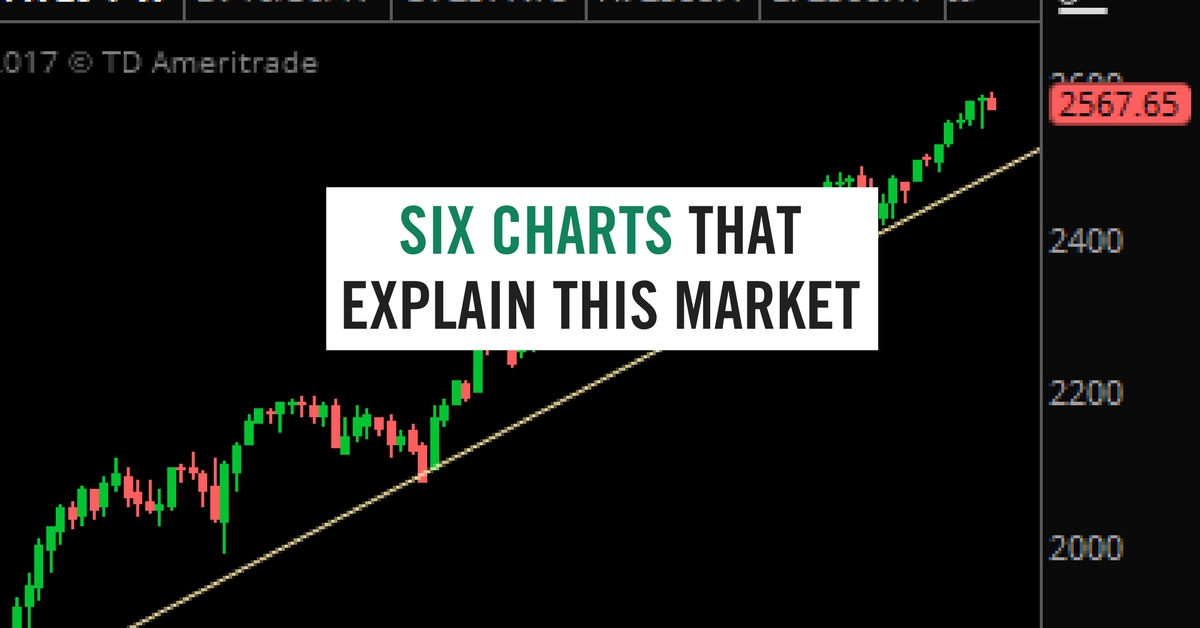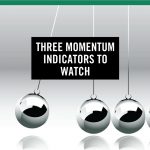Weekly Market Cheat Sheet, June 5, 2017
The Sevens Report is the daily markets cheat sheet our subscribers use to keep up on markets, leading indicators, seize opportunities, avoid risks and get more assets. Get a free two-week trial with no obligation, just tell us where to send it.
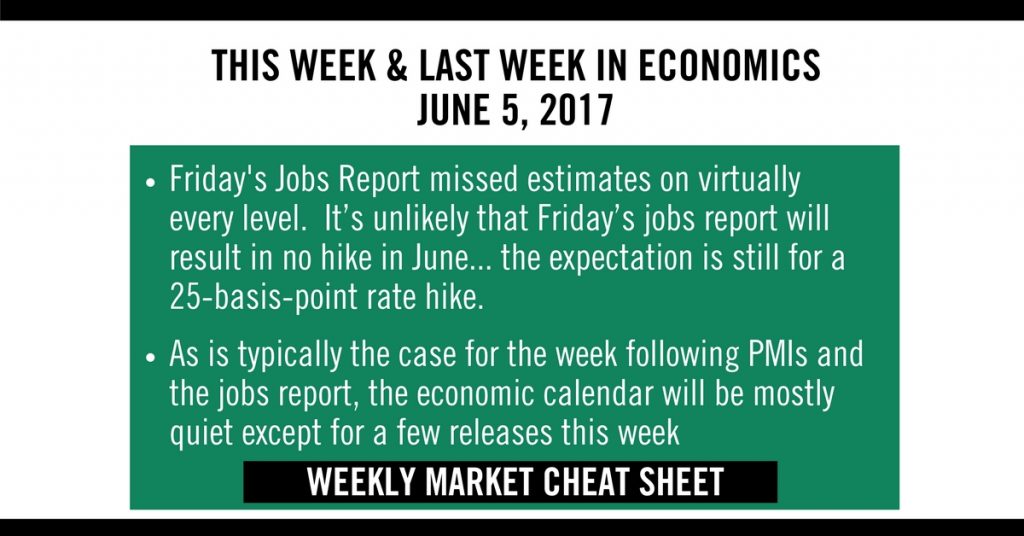
Last Week in Review:
Until Friday’s jobs report, the economic data last week was mildly encouraging, as multiple economic reports showed a mild bounce in activity during May. Unfortunately, that momentum was lost thanks to Friday’s jobs report, which missed estimates on virtually every level.
As we start a new week, the outlook on the economy remains as it’s been for two months. The absolute levels of activity are generally “ok,” but there is a decided lack of positive momentum. And though stocks continue to hit all-time highs, they are now well beyond any sort of fundamental foundation (i.e., this is not the same quality rally we saw in Q4 ’16/Q1 ’17) and that is a growing concern.
From a Fed standpoint, it’s unlikely that Friday’s jobs report will result in no hike at the June 15 meeting, although the issue is a bit more in doubt. Nonetheless, the expectation is still for a 25-basis-point rate hike.
Looking more specifically at last week’s data, the jobs report was the big (negative) surprise. Every measure of the jobs report missed expectations. May job adds were 138k vs. (E) 195k, and the unemployment rate fell to 4.3% vs. (E) 4.4% (but that was because of a 0.2% drop in the labor participation rate). Average hourly wages rose 2.5% vs. (E) 2.6% yoy, and the revisions were negative at -66k.
So, like most recent data, while the absolute level of employment remains “ok” (138k isn’t a bad number) the momentum and direction remain a concern… especially with markets so stretched on a valuation basis.
Looking outside of the jobs report, as mentioned, last week’s data was mildly encouraging. May ISM Manufacturing PMI (54.9 vs. (E) 54.6), May Auto Sales (16.7M vs. (E) 16.9M), and March Core PCE Price Index (0.2% vs. (E) 0.1%) all basically met or slightly beat expectations, implying
initially that there was some bounce back in both inflation and economic growth (which is critical to a continued reflation rally).
Unfortunately, that data was undermined by the jobs report, and as we start June legitimate doubts still linger about whether the economy is starting to lose momentum. Those doubts are not big enough to hit stocks yet, but I’ll remind everyone that stocks had a delayed reaction to the uptick in economic growth during the late summer/early fall of 2016.
This Week’s Preview:
As is typically the case for the week following PMIs and the jobs report, the economic calendar will be mostly quiet except for a few releases this week.
First, today’s global composite PMIs are already out, and the big number of the week domestically will come at 10:00 a.m. via the ISM Non-Manufacturing PMI. Again, given the sour taste the jobs report left at the end of last week (at least from an economic standpoint), a “beat”
here will be welcomed.
Outside of that ISM Non-Manufacturing PMI, the next most important event will be Thursday’s ECB meeting, where the central bank is widely expected to give a mildly hawkish signal by saying that risks to growth and inflation appear “balanced.” In Fed speak, that statement means a rate hike is coming, but in ECB speak it just means that the ECB is beginning to prep the market for tapering of QE, which should begin in early 2018.
Normally, the ECB meeting wouldn’t move US markets, but if the ECB surprises hawkishly or dovishly it will impact Treasury yields, which will improve or make worse the gap between yields and stocks.
Finally, the latest Chinese data comes Thursday night via CPI and PPI. China remains out on the relative macroeconomic back burner, but trends there aren’t encouraging. The May Caixin Manufacturing PMI dropped below 50 for the first time in months, joining a nowgrowing
list of other disappointing economic data.
Meanwhile, the Chinese yuan is starting to experience volatility again, as it has surged in the last few weeks to a multimonth high vs. the dollar (adding a bigger headwind to the Chinese economy). To be clear, China is not a macro risk that warrants caution, yet. However, the trend isn’t going in the right direction, and we will continue to watch that region for you.
Get the simple talking points you need to strengthen your client relationships with the Sevens Report. Everything you need to know about the markets delivered to your inbox by 7am each morning, in 7 minutes or less.

